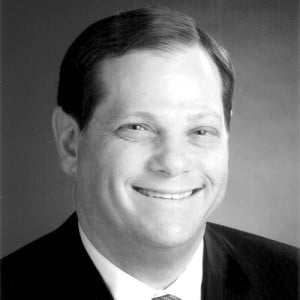
In 2011, the Centers for Medicare and Medicaid Services changed the guidelines for the treatment of skin wounds in nursing homes. No longer would these institutions’ nurses be able to directly treat wounds such as bedsores, rashes, and other breakdowns of the skin; instead, physicians would have to diagnose, treat, and prescribe follow-up antibiotics, medications, and care.
The change created a new business opportunity for companies that dispatch doctors to nursing homes. Milton Schachter, cofounder and CEO of AmeriWound LLC, seized the opportunity. Along with his business partner, Samson Fixler, a seasoned nursing-home operator, Schachter launched the venture, which aims to provide better wound care at a reduced cost to long-term-care facilities.
Before the new guidelines went into effect, a wound that was not healing properly often caused nursing homes to transport patients to hospitals or wound clinics for more costly treatment. The new guidelines, however, result in wounds being treated earlier and more effectively. “Treating nursing-home residents at [their] bedside costs significantly less than what would be realized in a hospital or wound clinic,” Schachter says.
As with any service business, the providers are the company’s lifeblood. Lining up contracts with nursing homes depends on hiring and training doctors so that they are ready to be deployed when the contract begins. Therefore, AmeriWound’s biggest challenge is recruiting enough physicians in a relatively tight time frame.
“Sometimes it’s an all-or-nothing proposition. With certain larger operators, you’re either contracting for all of their facilities or you don’t get any of their facilities.”
Nursing-home chains generally prefer to hire a single wound-care-service firm to handle all of their locations in a given state or region. “Sometimes it’s an all-or-nothing proposition,” Schachter says. “With certain larger operators, you’re either contracting for all of their facilities or you don’t get any of their facilities.” Ideally, he adds, when AmeriWound reaches a deal with a new client, it already has a full complement of physicians ready to deploy.
Sometimes, though, there is a phase-in period of a few months, buying the company enough time to augment its physician pool. To grow faster, the company is exploring raising capital from private investors. The funds would help the company hire more recruiters and provide baseline physician-compensation guarantees in new territories sooner, in anticipation of significantly more business.
An experienced healthcare executive, Schachter developed a business model that has produced fast, steady growth. One key point that has propelled AmeriWound’s current success is that physicians are compensated in line with their productivity. The more patients that physicians treat, the more they earn. This has been a successful business strategy, but it has also complicated the recruiting process because most doctors are accustomed to earning a guaranteed base salary. To curb those complications, AmeriWound is now sweetening its recruiting pitch with a base-salary guarantee that, Schachter believes, most full-time physicians will be able to double, triple, or, in some cases, even quadruple via the pay-for-productivity arrangement. Another recruiting challenge stems from the fact that many physicians are unfamiliar with the long-term-care arena. So, to help curb that issue, recruiting pitches include educating prospects on working in long-term care as well as on the company itself.
With the goal of expanding operations from five states to achieving a national presence, Schachter devotes much of his time to business development—meeting with new prospects in the nursing-home industry and managing growth. Although he delegates the responsibility of hiring doctors to regional managers and a chief medical officer (a former chief of surgery at one of the Cleveland Clinic campuses), Schachter closely monitors physician recruiting to assure it is timely and will lead to effective coverage of client operators.
For instance, knowing that a potential deal with a new operator looks promising, Schachter is able to assess how much business might be headed to a particular region or state. That knowledge can influence which recruits are best suited to individual clients or territories based on the anticipated workload, geographic base, and other factors.
Maintaining quality of service is critical as the company grows. To that end, providers must keep pace with the latest wound-treatment techniques. While surgeons, who make up most of AmeriWound’s provider staff, are familiar with hospital wound treatments, they typically do not focus on wound staging in the same manner that is required in the long-term-care market, with its attention to meticulous documentation. To get the best results for client facilities, most physicians need training on Minimum Data Set (MDS) 3.0 guidelines, which impact nursing-home-quality scores and reimbursement. A cadre of wound-certified nurses develops and provides training to newly hired physicians on staging wounds within a nursing home and the associated regulatory documentation requirements.
“AmeriWound physician training is often an eye-opening educational opportunity for many physicians who initially assumed it would be comparable to what they learned working in other settings,” Schachter explains.
Once hired, physicians must also learn AmeriWound protocols for treating different types of wounds. The company uses an electronic medical record system to track progress of each patient and to monitor the number of days it takes for each type of wound to heal. From this information, AmeriWound is able to monitor the “Days-to-Healing” metric, an important performance statistic for the company as a whole. AmeriWound is a top performer in this category, Schachter notes, and his challenge is to maintain that distinction during an ambitious growth phase.
In pursuit of this success, Schachter strives to hire top-notch people, delegate authority appropriately (according to expertise), and doesn’t pretend to know everything. He relies on his team to do what they do best, while demanding accountability. His job is to make sure all the processes and cogs are working in concert to construct a company that will thrive in a new niche of the medical industry. It’s a big challenge, but he believes he has the right team in place, the right business model, and the right management philosophy to capitalize on a once-in-a-lifetime opportunity.

